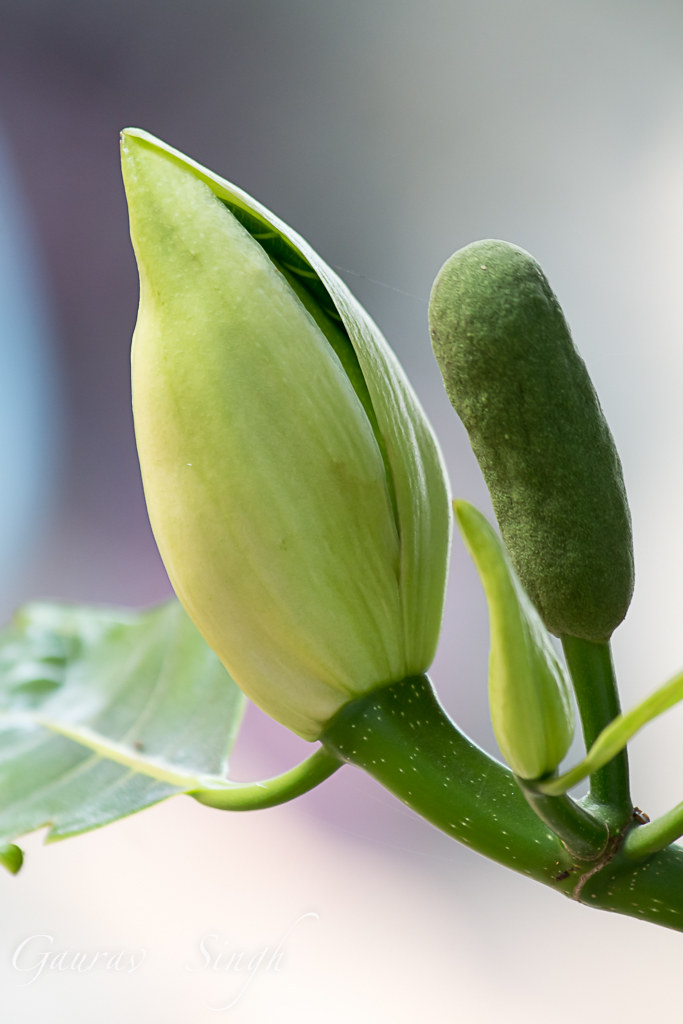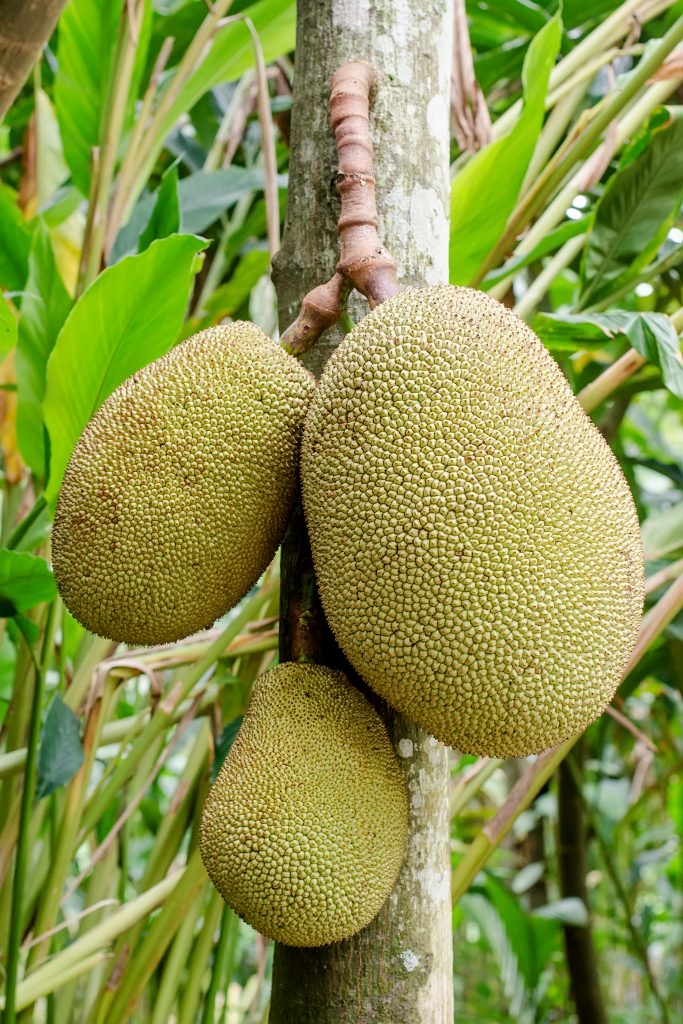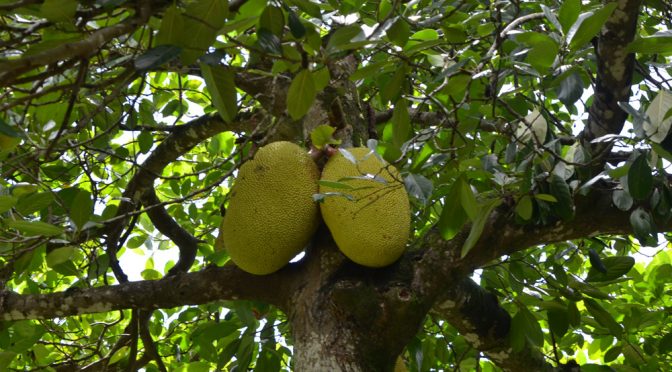Jackfruit or Artocarpus heterophyllus is a tropical evergreen tree that grows up to 20 m in height. It has one or two main trunks with a smooth and dark green bark. Its fruit is large, spiky, and composite. Its leaves are green, glossy, and leathery. Jackfruit is cultivated for its wide range of uses. Ashes of the leaves are used for treating ulcers, diarrhoea, boils, stomach-ache and boils. Seeds are aphrodisiac and as a cooling tonic like the pulp. Root decoction can reduce fever and can treat diarrhoea, skin diseases and asthma. The pulp is an anti-syphilitic and a vermifuge. The latex has an anti-bacterial activity similar to that of papaya latex. The fruit is edible, either consumed raw or cooked in many ways. The pulp of young fruit and the seeds are cooked as vegetable. The rind of the fruit produces a jelly. The seed can be grounded into a powder and used in biscuit-making. Jackfruit can be used to control soil erosion due to its extensive root system. Also, it is a fast growing tree. The wood is a very useful timber for it is resistant to termite attack and fungal and bacterial decay. It can also be used for fuel.
The ashes of leaves, with or without oil, are used to treat ulcers, diarrhoea, boils, stomach-ache and wounds. The pulp and seeds of the fruit are regarded as a cooling tonic. The seeds are said to be an aphrodisiac. The sap is an anti-syphilitic and a vermifuge. The wood is claimed to have sedative properties, and its pith is said to be able to induce abortion. A root decoction is used to alleviate fever, treat diarrhoea, skin diseases and asthma. The bacteriolytic activity of the latex is equal to that of papaya latex. Dried latex yields artotenone, a compound with marked androgenic action; it can also be mixed with vinegar to promote healing of abscesses, snakebite and glandular swellings.





Jackfruit hanging
